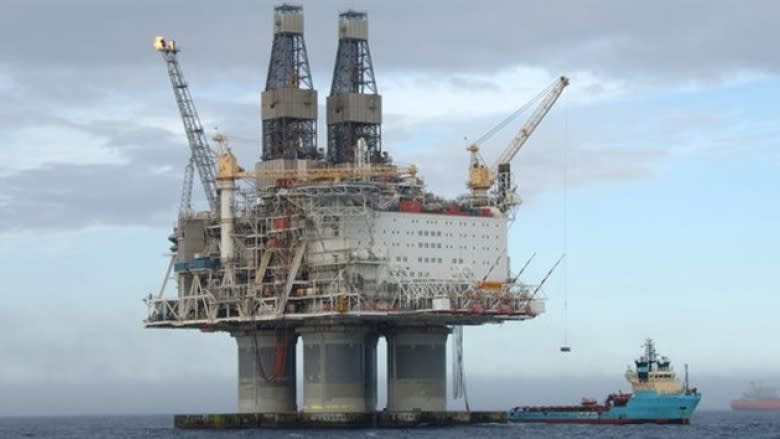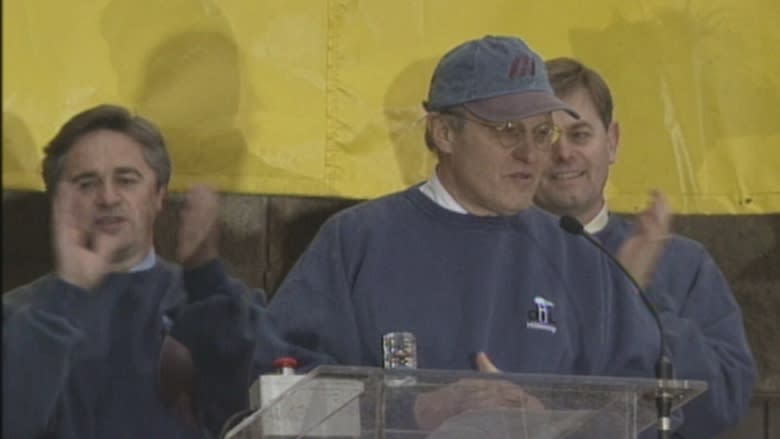Hibernia celebrates 20 years since first oil
Twenty years ago today, against a typically grey St. John's sky, then premier Brian Tobin and Hibernia president Harvey Smith addressed a crowd of hopeful Newfoundlanders and Labradorians.
"We've done it," Smith told a cheering crowd. "We have first oil."
The crowd clapped and threw streamers into the air.
And with that, Newfoundland and Labrador was officially in the oil business. First oil was pumping at Hibernia, the province's first offshore oil project.
In a province still reeling from the cod moratorium a few years before, that first trickle of black gold from the gravity-based platform 315 kilometres southeast of St. John's carried big expectations and big dreams.
"I believe that Newfoundland and Labrador will enter the next millennium, the next decade, the year 2000, very much as a province that is showing significant and strong growth, and will come out of the next decade very close to being a have province of Canada," said Tobin, at the time.
Tobin wasn't too far off: thanks to oil riches from Hibernia, and then from the Terra Nova and White Rose fields, the province was officially off equalization and safely into "have province" status in 2009, under Danny Williams and the PCs.
In 1986, Hibernia was only expected to have 520 million barrels of oil, and had once been forecast to run dry sometime between 2015 and 2017.
But it surpassed all expectations: on Dec. 22, 2016, one billion barrels of oil had been pumped from the field, with more to come.
The Hibernia project now employs more than 1,500 people and contributes millions of dollars every year to Newfoundland and Labrador's coffers, and is expected to for another 15 to 20 years.
The development of satellite fields like the Hibernia Southern Extension and Ben Nevis reservoirs has allowed Hibernia to continue pumping crude beyond its projected lifespan.
The project was built at a cost of nearly $6 billion, and according to the provincial government, the value of the oil produced up to a year ago was more than $65 billion.




